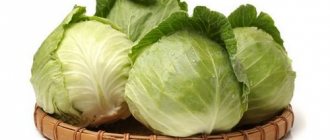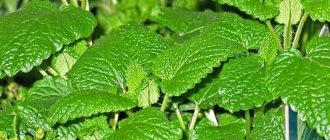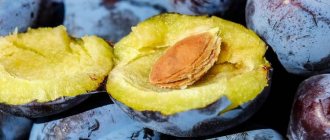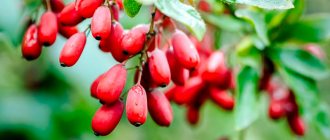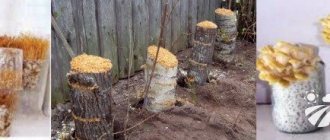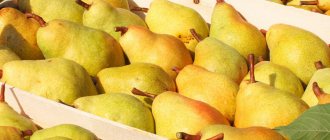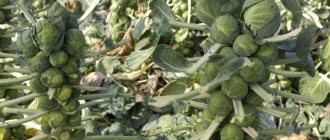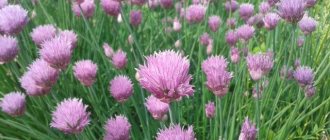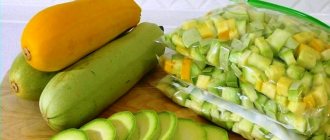I won’t be original if I say that of all the herbs available in my region, I highlight the incredibly aromatic basil. Many people are kind to this southern guest. In my small garden, the best place has been allocated for it - in the greenhouse, next to the tomatoes and peppers. The rest of the spices grow in an ordinary garden bed, blown by the winds and washed by the rains. As a result of being in greenhouse conditions, the grateful bushes grow to an impressive size, half my height, densely strewn with bright leaves.
Something needs to be done with a rich harvest, and I am always looking for new ways to prepare basil for the winter. Previously, I dried it in an electric dryer, and that was all I did. However, the dried herb retains little flavor and completely loses its bright green or purple color. Recently I began to practice other ways to preserve it, and in this article I share with you my findings.
Here is basil salt, which you will definitely need to make a lot of, because you will use it everywhere, it is so aromatic! Also, don’t ignore the wonderful recipes for basil oil and fragrant herbs frozen in olive oil.
Which basil is suitable for harvesting for the winter: types of basil
Types of basil suitable for harvesting for the winter
Beginner gardeners are accustomed to thinking that in nature there are only two types of basil - purple and green. They have a very pronounced spicy taste and aroma and, most importantly, are easy to care for. But at the moment, breeders have developed a lot of varieties with interesting tastes and aromas. Many of them are ideal for storing for the winter.
Types of basil suitable for harvesting for the winter:
- Fragrant. This type of basil has a very noticeable peppery aroma and a barely noticeable spice. When flowers appear on the plant, in addition to the peppery aroma, a menthol aroma also appears. The leaves of fragrant basil are very large, so it is more suitable for drying than other types.
- Clove . As is clear from the name, this type of basil produces an aroma similar to our usual seasoning - cloves. True, it is less bright, but still noticeable. The leaves of this species are not very large, so it is most often used for making sauces and basil paste.
- Clove-pepper. This species has a combined aroma. If you rub the leaf in your hands, you can smell both cloves and pepper. It has medium-sized leaves that are suitable for freezing, drying, and blanching.
- Citric. If you really like citrus notes, then choose this type of basil for harvesting for the winter. The main advantage of this variety is that it can be added to drinks, baked goods and various mousses. In addition to the lemon aroma, basil will add a slight sourness.
- Vanilla. This variety is suitable for use in making desserts. To prepare basil for the winter, you can use leaves, flowers, and stems. The leaves can be added to baked goods, and the dried stems and flowers can be used to make tea.
- Caramel. Another type that is suitable for adding to desserts and sweet drinks. This type has a pronounced aroma of fruity caramel. In this case, you can use not only leaves, but also flowers to prepare basil for the winter.
- Marinade . It will be an ideal additive when preparing various marinades. This variety belongs to the peppered types of basil. Produces a noticeable anise aroma. To preserve the aroma as much as possible, it is best to dry it in bunches or leaves. Below you can find out how to do this correctly.
- Menthol. Can be a great substitute for mint. When fresh, the menthol aroma is not very strong. But if you add basil to warm food or liquid, the aroma will become very bright. This type is best dried or frozen, and only then added to food.
Varieties of basil. Which variety to choose
Basil herb is conventionally divided into 2 types, which differ in the color of the leaves: green and purple. Varieties with green leaves have a delicate taste and light aroma, while purple leaves have a more specific taste.
Varieties are also distinguished according to taste and aromatic characteristics, some are added to confectionery, others to drinks, and others play the role of spices for first and second courses:
- Peppery smell and taste: Ruby, Broadleaf Basil, Baku, Thai Queen, Camphor, Aramis, Rosie, Oriental Magic, Edwina, Ararat.
- Clove scent: Clove, Clove scent, Tulsi, Dark night, Sandwich leaf.
- Anise aroma: Aniseed basil, Aniseed delight, Italian basil, Wonderful day.
- Clove-pepper aroma: Marquis, Basilisk.
- Menthol and lemon scent: Velvet, Sparkle, Lemon, New, Lemon.
- Vanilla Flavor: The aroma of vanilla.
- Caramel scent: Caramel basil.
- Cinnamon scent: Basil vegetable aroma of cinnamon.
- Peppermint: Greek.
Each variety in the name indicates where to use it, so the following varieties are suitable for confectionery products: lemon, caramel, vanilla, cinnamon. Anise, menthol, lemon, mint - for making drinks. Clove, pepper - for preparing protein foods.
How to properly collect and prepare basil for harvesting for the winter?
Preparing basil for harvesting for the winter
IMPORTANT: If your goal is to make the most fragrant basil preparation for the winter, then, if possible, try to collect the leaves before flowering. As practice shows, as soon as inflorescences appear on the plant, the taste and aroma of the green mass noticeably deteriorates. And if such leaves are dried, frozen, or pickled, then the taste of the product will not be so bright and rich. This is especially true for some varieties of basil - lemon, clove, caramel, menthol and vanilla. In these species, the characteristic notes disappear almost completely.
If you want to take succulent leaves from your basil bushes all season long, then regularly pinch the tops. This procedure will help slow down the development of inflorescences and also enhance the formation of side shoots with leaves. Well, now let's talk directly about preparing raw materials for harvesting for the winter.
First, you will need to carefully pick the required portion of the leaf from the bush, and when you bring it home, rinse it as thoroughly as possible in water. You can immediately put them in a colander and simply place it under running water. After carrying out this manipulation, you will need to leave the basil in a colander for a while so that excess liquid drains from it. While this is happening, prepare the area for more thorough drying.
To do this, spread a cotton towel on the kitchen table or simply lay out paper napkins. Place a thin layer of basil leaves on them and wait until they are completely dry. This step can be omitted if you are blanching or pickling the basil.
Selection and preparation
Fragrant greens are available in abundance in markets and supermarkets. It can be grown in the country without any problems. In the evening, the bushes are watered, and in the morning they are collected: succulent young branches without flowers are cut off with sharp scissors. During the night, the leaves absorb all the moisture, acquire elasticity and juiciness. These greens are used for freezing.
Harvesting basil for drying is done during the day without prior watering. The bushes easily emerge from dry soil. The collected branches are inspected, dry and diseased leaves are picked off. For preparations, whole branches or only leaves and flowers are used.
The greens are washed under the tap, thoroughly washing away dirt, dust, and insects. Then dry between two layers of paper or waffle towel or in a lettuce dryer.
Reference. In Italy, basil was considered a symbol of love, and in Romania, a branch of basil, accepted by a young man from the hands of a girl, meant consent to marriage. In Mexico, there is a belief that the plant protects married couples from infidelity.
How to properly dry basil for the winter with a bunch and a leaf?
Drying basil leaves for the winter
As you probably already understood, there are several ways to dry basil for the winter. It’s up to you to choose the drying method, but I would like to say that preparing raw materials in sheets will be preferable if you need to dry the raw materials quickly.
Drying basil leaves for the winter:
- First, prepare the raw materials for drying
- Collect the leaves, rinse and dry on a towel
- Line a baking sheet with parchment paper and warm it slightly in the oven.
- Adjust the oven literally to 30-45 degrees
- Spread the leaves on a baking sheet in a thin layer and place them in the oven
- When the mass decreases in size by 2 times, you can increase the temperature to 70 degrees for 5 minutes.
- After this, turn off the oven and leave the basil in it until it cools completely.
- After cooling, dry raw materials must be immediately transferred to a dry, hermetically sealed container.
IMPORTANT: If you wish, you can dry the basil in an electric dryer. In this case, you will also need to carry out standard preparation of the raw materials, and then lay them out in a thin layer on pallets. As soon as this is done, set the temperature to 35 degrees and calmly go about your business. In an hour you will need to come back and swap the pallets. After about 4 hours you will have a spicy basil seasoning.
Drying basil in a bunch for the winter:
- To begin, cut off the basil stems, rinse them under running water, and dry them slightly.
- Fold the stems into a bunch and secure everything with an elastic band or ordinary thread
- Bunches can be strung on a stronger thread and hung under a canopy outdoors or opposite a window indoors
- The drying place must be chosen in such a way that the raw materials are not exposed to direct sunlight
- It will take about two weeks for the basil to dry in this way.
IMPORTANT: Before storing the bundles, be sure to check that they have dried well. To do this, pick up a stem and try to break it. If it breaks easily, the raw material can be removed from the thread. If the stem is bent, it means the basil has not yet completely dried.
Preparing the main ingredient
Preparation of the ingredient begins with collecting basil from the garden. Young branches that have not begun to bloom are cut off with scissors. The part of the stem that has not yet become coarse and looks juicy is cut off. In the evening, the bush is watered, and in the morning they begin to harvest, so the plant gains moisture and becomes juicier and softer, especially if it is then frozen.
Collection of workpieces for drying can take place during the daytime in strong sunlight. The bushes are easy to uproot if you do not use scissors, but tear them off with your hands.
After harvesting, the branches of greenery are placed on the table and diseased, dry, rotten leaves are removed; you can not use the branches for harvesting, but tear off only the leaves.
The prepared leaves should be washed several times with warm running water so that no dust, dirt or possible pests remain on them. I put the washed grass on a towel and let it drain for a few minutes, after which it is prepared for one of the types of preparations.
How to properly freeze fresh basil for the winter?
Freezing basil leaves for the winter
Freezing fresh basil for the winter is very simple. You need to collect the raw materials, wash them and dry them. Special attention should be paid to drying the sheet, since if you put a wet sheet in the freezer, you will end up with a slightly watery product. To prevent this from happening, be sure to wait until the basil is completely dry, and only then send it to freeze.
To do this, place the basil on a tray or large plate, having previously placed cling film on the container. Place the leaves in one layer and it is advisable that they do not touch each other. Once the basil is frozen, transfer it to a container with a lid and store it in the freezer.
How to properly freeze blanched basil for the winter?
Freezing basil for the winter
IMPORTANT: If you want the basil to retain its bright green or purple color after blanching, then be sure to prepare ice water in advance and immediately immerse the raw materials in it after heat treatment. This will keep the basil from cooking completely, and it certainly won't change its natural color.
So:
- Wash the basil leaves and let a little excess liquid drain off.
- Cool the water in advance or simply add an ice cube to it and place it near the stove
- Place the basil in small portions in boiling water, literally for 10-15 seconds, and immediately transfer it to ice water
- When it has cooled completely, dry it on paper napkins.
- Place the finished raw materials on trays and place them in the freezer.
- After freezing, the raw materials can be placed either in a container with a lid or in a sealed bag
- If desired, blanched basil can be placed in compact molds or airtight bags and frozen in this form.
How to properly pickle basil for the winter?
IMPORTANT: When preparing basil for the winter using this method, it is important to take into account that in this case the product will be quite salty, which will need to be used carefully. Too much basil in food can make it too salty and not very tasty.
Pickling basil for the winter takes some time. Since to fill the container you will have to wait several times for the raw material to release juice and thicken, you can even spend a whole day doing this. But first, be sure to do the standard preparation. Rinse the leaves and be sure to dry them. If you do not dry the raw materials, you will end up with too much liquid in the container, and you will not be able to make the so-called salt plug.
Pickling basil for the winter:
- First, sterilize the container in which you will place the sheet.
- It can be used either whole or crushed.
- However, if you choose the latter option, remember that it is better to tear the basil with your hands
- If you cut it, the fibers of the leaves will oxidize, and this will slightly change the taste of the product.
- Sprinkle the bottom of the jar with a little salt
- Place a layer of basil on top
- Sprinkle it again with salt, and then lay the layer of raw materials again
- Fill the container completely and let it sit for a couple of hours.
- During this time, the basil will release juice and settle a little
- You will need to repeat all the manipulations until the container is completely filled
- You must make sure that there are no empty spaces in the container, and the basil itself is slightly compacted
- When the container is full, sprinkle the workpiece with a thick layer of salt and cover with a lid.
- Store salted basil in a cool place.
Pickling basil
Harvesting using the salting method does not involve temperature exposure, this allows you to preserve the maximum amount of minerals and nutrients. Only jars and metal lids are treated with sterilization. For preparation take:
- basil - 400 grams;
- salt - 200 grams.
Lay out the basil leaves, successively alternating layers with salt. Store salted greens in the refrigerator, under rolled up lids. This ingredient is used in dishes in compliance with the rule - first add salted basil and only then, if necessary, add salt.
How to pickle basil for the winter?
Recommendations for pickling basil for the winter
Preparing basil for the winter using this method will help you obtain a product that can eventually be added to salads, first and second courses without any preparation.
Recommendations for pickling basil for the winter:
- We carry out standard preparation of raw materials
- Sterilize the container and let it dry
- Place water on the stove, salt it, pepper it and bring it to a boil.
- Add a little citric acid to it
- The marinade should be slightly sour and moderately salty.
- Place peppercorns and a bay leaf in a dry container.
- Blanch the basil and place it tightly in a container
- When it is full, pour the slightly chilled marinade over everything and roll up the lids.
- After cooling, remove the workpiece to a cool place
How to properly prepare basil paste for the winter?
Basil paste for the winter
Basil, prepared in the form of a paste, can be used as a spicy sauce for Italian pasta, pasta, rice, or you can prepare an original sauce based on it. In this case, you can combine different varieties to get a more interesting taste. So you can take ordinary fragrant basil and add lemon, clove or menthol to it.
So:
- Wash and dry the desired varieties of basil (approximately 500 g)
- Place it in a blender bowl, add a couple of tablespoons of vegetable oil and salt to taste
- Mix all ingredients into a homogeneous mass
- Add a couple of tablespoons of oil again and stir again
- Place the resulting paste in pre-sterilized glass jars.
- Store the product in the refrigerator
Method 3 - with olive oil
Some housewives complain that basil frozen whole becomes ugly and loses its shape. There is a simple way out - make a puree from it with the addition of butter. Among the vegetable groups, the most popular are olive, sunflower and corn. Try not to use oils that are sensitive to low temperatures.
Basil puree with oil is ideal for dressing salads, as a flavorful dressing for soup, for frying, for mashed potatoes, meat and fish dishes, and even for marinade.
How to cook, recipe:
- Rinse the leaves, dry them on a waffle towel or using a hand centrifuge.
- Grind with a blender to a paste.
- Add about 1 tbsp per glass of greens. l. vegetable oil.
- Puree the mixture again for a few seconds, or simply stir with a spoon.
- Distribute into portioned ice or baking trays.
- Send for storage wrapped in two bags.
Tip: Use silicone molds - they are the most convenient for squeezing out portions of greens. From metal and plastic, you will have to pick up the freeze with a knife.
A little trick: in order not to remove the form with the preparation every time, a day after placing it in the chamber, take out the basil, free the portions and pack them in separate bags.
How to properly prepare basil oil for the winter?
IMPORTANT : It is advisable to use such a preparation within 3 months. As practice shows, for approximately this period, basil oil remains as fragrant and healthy as possible. The longer it is stored, the less pronounced the piquant aroma and taste become.
Preparing basil oil for the winter:
- Sterilize the glass jar and the lid you will use to close it in advance.
- Wash the basil, pour boiling water over it and tear it into smaller pieces with your hands.
- For a half-liter jar of oil you will need approximately 100 g of finished raw materials
- Place the basil in a jar, add some salt and crush it, or mash it with a spoon to release the juice.
- Fill the mixture to the top with vegetable oil and close the lid.
- Store in the refrigerator
- The oil will infuse for approximately 14 days.
- During this time, do not forget to shake the contents of the container 2 times a day.
Storage periods and rules
The optimal shelf life for any greens is six months. Then the plant retains its smell, taste and beneficial properties. Basil is harvested every season.
Shelf life depending on the processing method:
- blanched - 6-12 months;
- canned (pasteurized) - 1-2 years;
- canned without sterilization - 6 months;
- dried - 2 years;
- frozen at –18°C – 1 year.
Once opened, the jar is stored in the refrigerator for 2-4 days.
Dried herbs are stored in craft bags, glass jars or clay spice containers in a dry, cool and dark place.
How to properly prepare basil sauce for the winter?
Basil sauce for the winter
This interesting sauce can be an excellent replacement for the usual ketchup. This preparation can be stored frozen or immediately after preparation, placed in a sterile container and placed in the refrigerator.
Ingredients for making basil sauce for the winter:
- Bell pepper – 300 g
- Onion (green feather) - 150 g
- Purple basil – 400 g
- Vegetable oil - 100 ml
- Salt to taste
- Juice of half a lemon
Preparation:
- Wash all ingredients, dry and chop
- It is necessary to dry it as excess liquid in the workpiece will reduce the shelf life
- Place the prepared basil, onions and peppers in a blender bowl
- Salt and add half the vegetable oil
- Beat everything into a homogeneous mass and transfer it to a previously sterilized container.
- Carefully pour the remaining oil over the mixture and immediately close the lid.
Choosing a storage location
Not every home has a lot of space to store greenery. The most optimal places are considered to be a room, a refrigerator, a shelf for vegetables, and a freezer.
See also
How to properly store beans for the winter at home
At room temperature
Without water indoors, basil lasts only 24 hours. To increase this time to 7 days, the bundle is placed in a glass of water. It is changed daily and the roots of the stems are trimmed. At the end of the period, the plants are thrown away or frozen.
In a refrigerator
Some housewives put a bunch of basil in water in the refrigerator. The leaves are separated from the stems, then the leaves are wrapped in cling film. Can also be stored in a plastic container. In this form, the greens are stored for 14 days.
In the vegetable compartment
It is known that in the vegetable compartment in the refrigerator the temperature is constantly maintained at 2 °C. In this place, basil will keep for up to 3 weeks. It needs to be checked daily. It is also better to wrap the leaves or bunch with cling film.
In the freezer
Frozen storage time is 2 years. First, the leaves are separated from the stems. Wash them with water and clean them of dirt. Blot with a towel and place in a plastic bag or plastic container. Basil can also be frozen in its entirety, along with the stems. But it is worth considering that it will not be possible to tear off a couple of leaves from a frozen branch, as they become brittle. You will have to defrost the entire stem.
Important! A piece of paper labeled with the date of freezing and time of collection of the raw materials is placed in the bag of basil.
How to properly prepare basil flowers for the winter?
Basil flowers for the winter
Many gardeners try to pick off basil flowers because they believe that there is no benefit from them. In fact, even this part of the basil can be harvested for the winter. In view of this, if you did not have time to pinch in time and inflorescences appeared on the basil bushes, then do not be upset and carefully cut them off. They can be dried and then used in the preparation of teas, decoctions and tinctures.
So:
- Cut off the inflorescences and inspect them for small bugs
- Rinse them under running water
- Dry and place in a thin layer on a tray or larger platter.
- Place them in a dark place with good ventilation
- Wait until it dries completely and then put it in a glass container.
Finally
These were the four easiest ways to prepare delicious basil, but the housewives’ ideas don’t stop there. Some people freeze crushed leaves in water to make ice cubes.
Expert opinion
Zakharov Igor Vyacheslavovich
Consultant at a furniture store. 5 years of experience.
Another recipe uses meat broth instead of water. A popular method is pre-blanching.
To do this, the basil is peeled and lightly doused with boiling water.
Thawing basil is as easy as freezing recipes. If you are cooking on the stove, then simply add a cube of greens to the dish. To dress a salad with whole leaves, long defrosting is also not required.
Remember that the longer basil is stored, the less vitamins it contains. Try to use the preparations before spring, and soon a new harvest of early greens will appear.
Basil is a useful spice that is used to prepare meat and fish dishes, soups, sauces and is added to canning and marinades. Some varieties can be grown indoors in winter, but not everyone knows how to do it correctly, so many people prepare basil for the winter in different ways.
- 1 Varieties of basil. Which variety to choose
- 2 Prepare the main ingredient
- 3 Drying basil for the winter 3.1 Naturally
- 3.2 In the oven
- 3.3 In an electric dryer
- 3.4 In the microwave
- 4.1 Fresh leaves
Preparing basil for the winter: the best and simplest recipes
Spicy green seasoning
As you probably already understood, you can prepare basil in different ways. All of them will help extend the shelf life of the spicy product and make it possible to enjoy the piquant taste and aroma all winter. But now we will introduce you to recipes that will allow you to diversify your winter menu even more.
Spicy green seasoning
Components:
- 200 g basil greens
- 100 g parsley
- 50 g celery greens
- 4 cloves garlic
- 1 tsp khmeli-suneli
- Salt 100 g
Preparation:
- Wash all the greens, dry them and chop them in a blender.
- Peel the garlic and pass through a garlic press
- Add garlic, salt and suneli hops to the mixture
- Mix everything thoroughly and place in a sterile container.
Walnut-basil paste
Components:
- Nuts - 300 g
- Basil – 300 g
- Vegetable oil - 150 ml
- Salt to taste
- A couple of garlic cloves
Preparation:
- Peel the nuts and grind them in a blender almost into flour
- Wash the basil, dry it and also chop it into a homogeneous mass.
- Mix both masses in a blender bowl, add salt, garlic and vegetable oil to them.
- Mix everything until smooth and place in sealed jars (sterilized)
How long can basil preparations be stored?
As for how long you can store basil, everything will depend on the harvesting method you choose. So, for example, if you freeze or dry raw materials, you can safely use it for at least 6 months .
If you carry out pickling, then you can use this basil only for 4 months . After this time, the salt will change the taste of the product and it will become less aromatic. Well, if you use garlic, onions and vegetable oil to prepare preparations for the winter, then they will be edible for approximately 3 months .
Distinctive features of storage at home
Green basil can be stored at home from 7 days to 2 years. It all depends on the chosen storage method. The best method is to keep the bunch in a glass of water. But the storage period is only 7 days, and the roots need to be trimmed daily. When choosing to freeze, some of the beneficial nutrients, aroma and properties of basil are lost. But the shelf life is not limited. Also, vinegar and paste are prepared from greens, they are canned, salted, and oil is prepared.
Any processing methods partially or completely retain the beneficial properties, nutritional value, and aroma. Each housewife independently chooses the storage method. Some methods require a lot of time, others take place in the freezer. It is not easy to make basil oil or vinegar; it requires knowledge and skill.
Important! It is better to process a large amount of greens within 7 days, after which the grass withers and becomes unusable.
